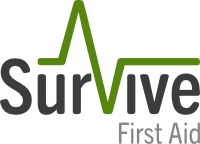ANZCOR Guideline 9.2.7 – FIRST AID MANAGEMENT OF ANAPHYLAXIS

Guideline
Who does this guideline apply to?
This guideline applies to adults, children and infant victims.
Who is the audience for this guideline?
This guideline is for use by bystanders, first aiders and first aid providers.
1 Introduction
Anaphylaxis is the most severe form of allergic reaction and is potentially life threatening. It must be treated as a medical emergency, requiring immediate treatment and urgent medical attention. Anaphylaxis is a generalised allergic reaction, which often involves more than one body system. A severe allergic reaction usually occurs within 20 minutes of exposure to the trigger.^1 Severe allergic reactions may occur without prior exposure to a trigger. It is characterised by rapidly developing airway and/or breathing and/or circulation problems usually associated with swelling, redness or itching of the skin, eyes, nose, throat or mouth. Many substances can cause anaphylaxis but more common causes include:
- foods (especially peanuts, tree nuts, cow’s milk, eggs, wheat, seafood, fish, soy, sesame)^2
- drugs (e.g. penicillin^3 )
- venom from bites (ticks) or stings (e.g. bees, wasps or ants).
2 Recognition
Anaphylaxis encompasses a variety of symptoms and signs. Diagnosis is largely based on history and physical findings. Onset can range from minutes to hours of exposure to a substance.^2 Symptoms and signs are highly variable and may include^4 one or more of the following:
- difficult / noisy breathing
- wheeze or persistent cough
- swelling of face and tongue
- swelling / tightness in throat
- difficulty talking and /or hoarse voice
- persistent dizziness / loss of consciousness and / or collapse
- pale and floppy (young children)
- abdominal pain and vomiting
- hives, welts and body redness.
3 Management
People with diagnosed allergies should avoid all trigger agents / confirmed allergens and have a readily accessible anaphylaxis action plan and medical alert device. Whenever possible, this information should be sought and implemented provided this does not delay emergency treatment and seeking medical assistance.
3.1 Emergency Treatment
The injection of adrenaline (epinephrine) is the first line drug treatment in life threatening anaphylaxis.4,5,6,^
Adrenaline (epinephrine) autoinjectors are safe and effective management of anaphylaxis. People who have had a prior episode of anaphylaxis often have prescribed medication including adrenaline (epinephrine) in the form of an autoinjector and the early administration of adrenaline (epinephrine) is the priority in the emergency treatment.
If the victim’s symptoms and signs suggest anaphylaxis the following steps should be followed.^4
- Lay the victim flat; do not stand or walk. If breathing is difficult, allow to sit (if able).
- Prevent further exposure to the triggering agent if possible.
- Administer adrenaline (epinephrine) via intramuscular injection4,6 (Class A; LOE 4) preferably into lateral thigh:
- Child less than 5 years - 0.15 mg
- Older than 5 years - 0.3mg. 4. Call an ambulance.
- Administer oxygen, if available and trained to do so (Class B LOE Expert Consensus Opinion. ANZCOR Guideline 10.4).
- Give asthma medication for respiratory symptoms.
- A second dose of adrenaline (epinephrine) should be administered by autoinjector to victims with severe anaphylaxis whose symptoms are not relieved by the initial dose (CoSTR 2015: weak recommendation/very low quality evidence)^8. The second dose is given if there is no response 5 minutes after the initial dose^5.
- If allergic reaction or anaphylaxis has occurred from an insect bite or sting follow Envenomation- Tick Bites And Bee, Wasp And Ant Stings (ANZCOR Guideline 9.4.3).
- If victim becomes unresponsive and not breathing normally, give resuscitation following the Basic Life Support Flowchart (ANZCOR Guideline 8).
Acknowledgement
Instructional information regarding auto injectors can be accessed via the ASCIA (Australian Society of Clinical Immunology and Allergy) webpage: http://www.allergy.org.au/health-professionals/anaphylaxis-resources
References
- Anaphylaxis Australia. What is anaphylaxis. https://www.allergyfacts.org.au/allergy- anaphylaxis/what-is-anaphylaxis Accessed 19/
- Sampson, H.A. Anaphylaxis and emergency treatment. Pediatrics 2003. 111 : 1601- 8
- Fisher, M. Anaphylaxis to anaesthetic drugs. Novartis Found. Symp. 2004. 257 : 193-
- Australasian Society of Clinical Immunology and Allergy. Action Plan for Anaphylaxis. http://www.allergy.org.au/health-professionals/anaphylaxis-resources/ascia-action-plan-for- anaphylaxis Accessed 19/11/2015.
- Australasian Society of Clinical Immunology and Allergy. First Aid for Anaphylaxis. http://www.allergy.org.au/images/stories/anaphylaxis/2015/ASCIA_FIRST_AID_FOR_ANAP HYLAXIS_2015.pdf Accessed 19/11/2015.
- Sheikh, A, Shehata, Y.A, Brown, S.G.A., Simons, F.E.R. Adrenaline (epinephrine) for the treatment of anaphylaxis with and without shock. Cochrane Database of Systematic Reviews 2008, Issue 4. Art. No.: CD006312. DOI: 10.1002/14651858.CD006312.pub2.
- Brown, S.G.A, Mullins, R.J., Gold, M.S. Anaphylaxis: diagnosis and management. Med. J. Aust. 2006. 185 (5):283- 9
- Zideman, D. A., Singletary, E. M., De Buck, E.,et al. (2015). Part 9: First aid: 2015 International Consensus on First Aid Science with Treatment Recommendations. Resuscitation, 95 , e225. http://www.cprguidelines.eu/assets/downloads/costr/S0300-9572(15)00368-8_main.pdf Accessed 19/11/
Further Reading
ANZCOR Guideline 4 Airway
ANZCOR Guideline 8 Cardiopulmonary Resuscitation
ANZCOR Guideline 9.4.3 Envenomation – Bee, Wasp and Ant Stings
ANZCOR Guideline 10.4 The Use of Oxygen by First Aiders
